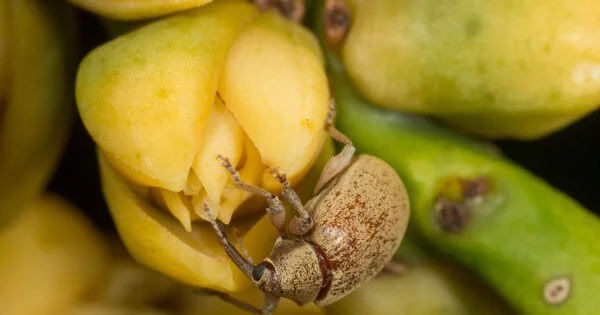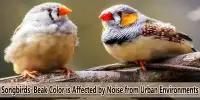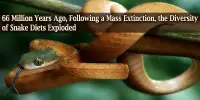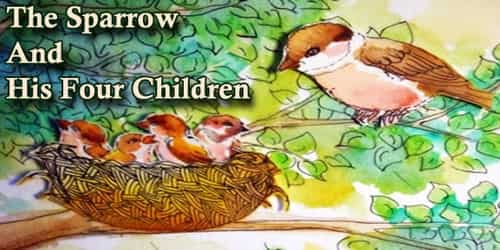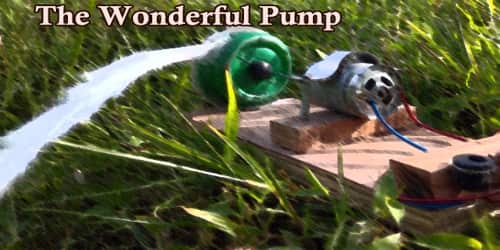Weevils, also known as long-nosed beetles, play an important role in ecosystems and can help with pollination in some cases. While they may not receive as much attention as other pollinators such as bees or butterflies, weevils have co-evolved with certain plants and developed specialized pollination relationships.
Even scientists miss some of nature’s most diverse pollinators: long-snouted beetles known as weevils. A new study delves into the more than 600 species of weevils, including those whose entire life cycles are intertwined with the plant they help pollinate.
Pollinators include butterflies, bees, and even bats, which travel from flower to flower to feed and, in the process, help fertilize the plants by spreading pollen. However, some of nature’s most diverse pollinators are often overlooked, even by scientists: long-snouted beetles known as weevils. A new study published in the journal Peer Community in Ecology delves into the more than 600 species of weevils, including those whose entire life cycles are intertwined with a specific plant that they help pollinate.
“Even people who work on pollination don’t usually consider weevils as one of the main pollinators, and people who work on weevils don’t usually consider pollination as something relevant to the group,” says Bruno de Medeiros, an assistant curator of insects at Chicago’s Field Museum and the senior author of the study. “There are lots of important things that people are missing because of preconceptions.”
In this study, we focused on brood-site pollinators – insects that use the same plants they pollinate as breeding sites for their larvae. It is a special kind of pollination interaction because it is usually associated with high specialization.
de Medeiros
Scientists have identified over 400,000 species of beetles, making them the world’s largest animal group. Weevils are the most numerous group of beetles. “We know about 60,000 species of weevils, which is roughly the same as the total number of vertebrate animals,” de Medeiros says. The new study is a review of hundreds of previously published descriptions of interactions between weevils and plants in order to better understand their role as pollinators.
Weevils are sometimes considered pests; they can be found in pantries eating pasta and grains, and around the turn of the twentieth century, boll weevils disrupted the cotton economy of the American South by feeding on cotton buds. However, many species are beneficial to plants, especially as pollinators.
“In this study, we focused on brood-site pollinators – insects that use the same plants they pollinate as breeding sites for their larvae,” says de Medeiros. “It is a special kind of pollination interaction because it is usually associated with high specialization: because the insects spend their whole life cycle in the plant, they often only pollinate that plant. And because the plants have very reliable pollinators, they mostly use those pollinators.”
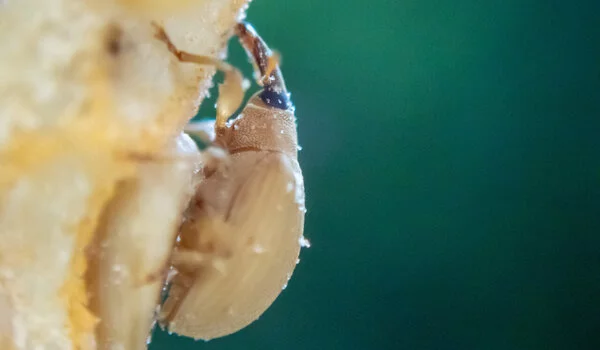
Brood-site pollination is similar to a more extreme version of the relationship between Monarch butterflies and milkweed, which is the only plant eaten by Monarch caterpillars and where the butterflies lay their eggs. However, unlike Monarchs, brood-site pollinators take the relationship a step further: adult Monarchs feed on the nectar of many different flowers, whereas brood-site pollinators, such as many species of weevils, rely solely on one plant partner as a source of food and a site for egg-laying.
“This kind of pollination interaction is generally thought to be rare or unusual,” de Medeiros explains. “In this study, we show that there are hundreds of weevil species and plants for which this has been documented already, with many, many more yet to be discovered.”
These closely-linked relationships mean that the plants and weevils need each other to flourish. “Oil palm, which is used to make peanut butter and Nutella, was not a viable industry until someone figured out that the weevils found with them were their pollinators,” says de Medeiros. “And because people had an incorrect preconception that weevils were not pollinators, it took much, much longer than it could have taken.”
He claims that one of the motivations for the new study is to address such misconceptions. “We’re highlighting a group of insects that most people want to see killed, and we’re showing that they can actually be pretty important for maintaining ecosystems and products that we care about,” he explains. “We hope that by summarizing what we know and providing some pointers on what we should be paying attention to, we can help other researchers and the general public better appreciate the role of weevils as pollinators, especially in the tropics.”
